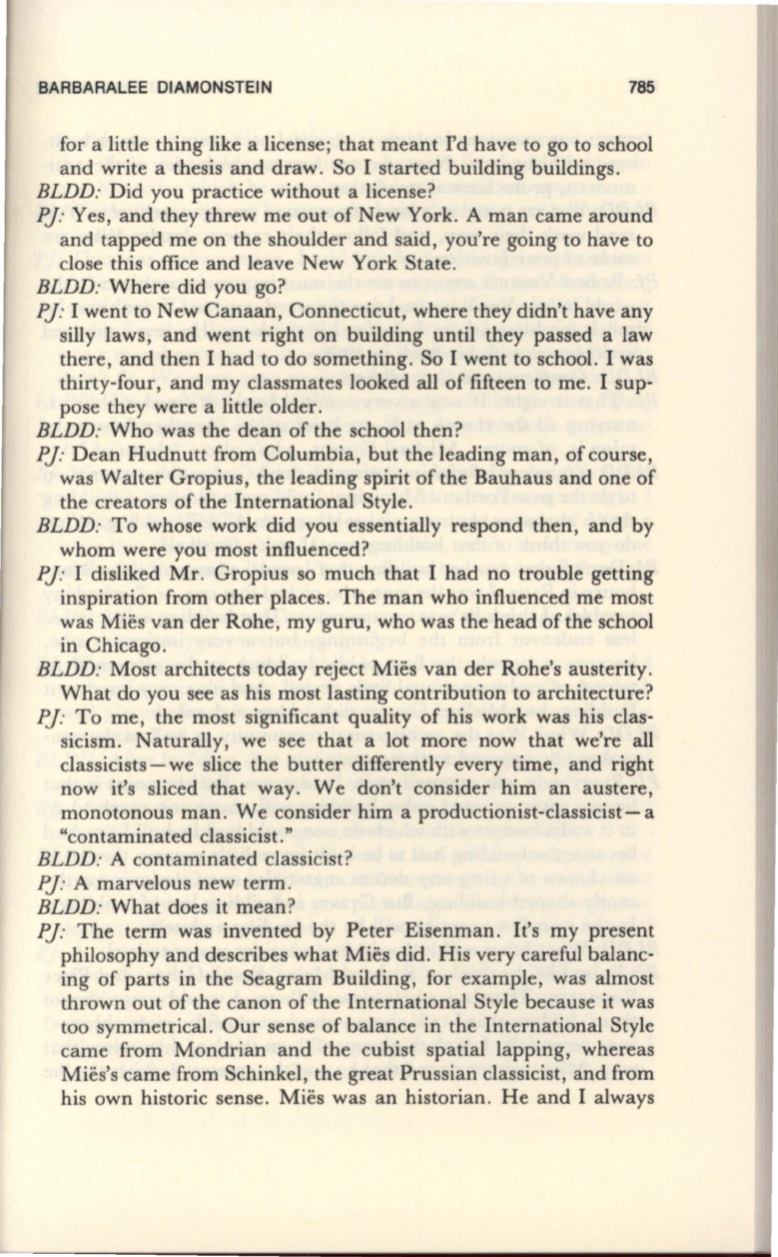
BARBARALEE DIAMONSTEIN
785
for a little thing like a license; that meant I'd have to go to school
and write a thesis and draw. So I started building buildings.
BLDD:
Did you practice without a license?
PJ:
Yes, and they threw me out of New York. A man came around
and tapped me on the shoulder and said, you're going to have to
close this office and leave New York State .
BLDD:
Where did you go?
PJ:
I went to New Canaan, Connecticut, where they didn't have any
silly laws, and went right on building until they passed a law
there, and then I had to do something. So I went to school. I was
thirty-four, and my classmates looked all of fifteen to me. I sup–
pose they were a little older.
BLDD:
Who was the dean of the school then?
PJ:
Dean Hudnutt from Columbia, but the leading man, of course,
was Walter Gropius, the leading spirit of the Bauhaus and one of
the creators of the International Style .
BLDD:
To whose work did you essentially respond then, and by
whom were you most influenced?
PJ:
I disliked Mr. Gropius so much that I had no trouble getting
inspiration from other places. The man who influenced me most
was Mies van der Rohe, my guru, who was the head of the school
in Chicago.
BLDD:
Most architects today reject Mies van der Rohe's austerity.
What do you see as his most lasting contribution to architecture?
PJ:
To me, the most significant quality of his work was his clas–
sicism. Naturally, we see that a lot more now that we're all
classicists- we slice the butter differently every time, and right
now it's sliced that way. We don't consider him an austere,
monotonous man. We consider him a productionist-classicist- a
"contaminated classicist."
BLDD:
A contaminated classicist?
PJ:
A marvelous new term.
BLDD:
What does it mean?
PJ:
The term was invented by Peter Eisenman. It's my present
philosophy and describes what Mies did. His very careful balanc–
ing of parts in the Seagram Building, for example, was almost
thrown out of the canon of the International Style because it was
too symmetrical. Our sense of balance in the International Style
came from Mondrian and the cubist spatial lapping, whereas
Mies's came from Schinkel, the great Prussian classicist, and from
his own historic sense . Mies was an historian. He and I always


